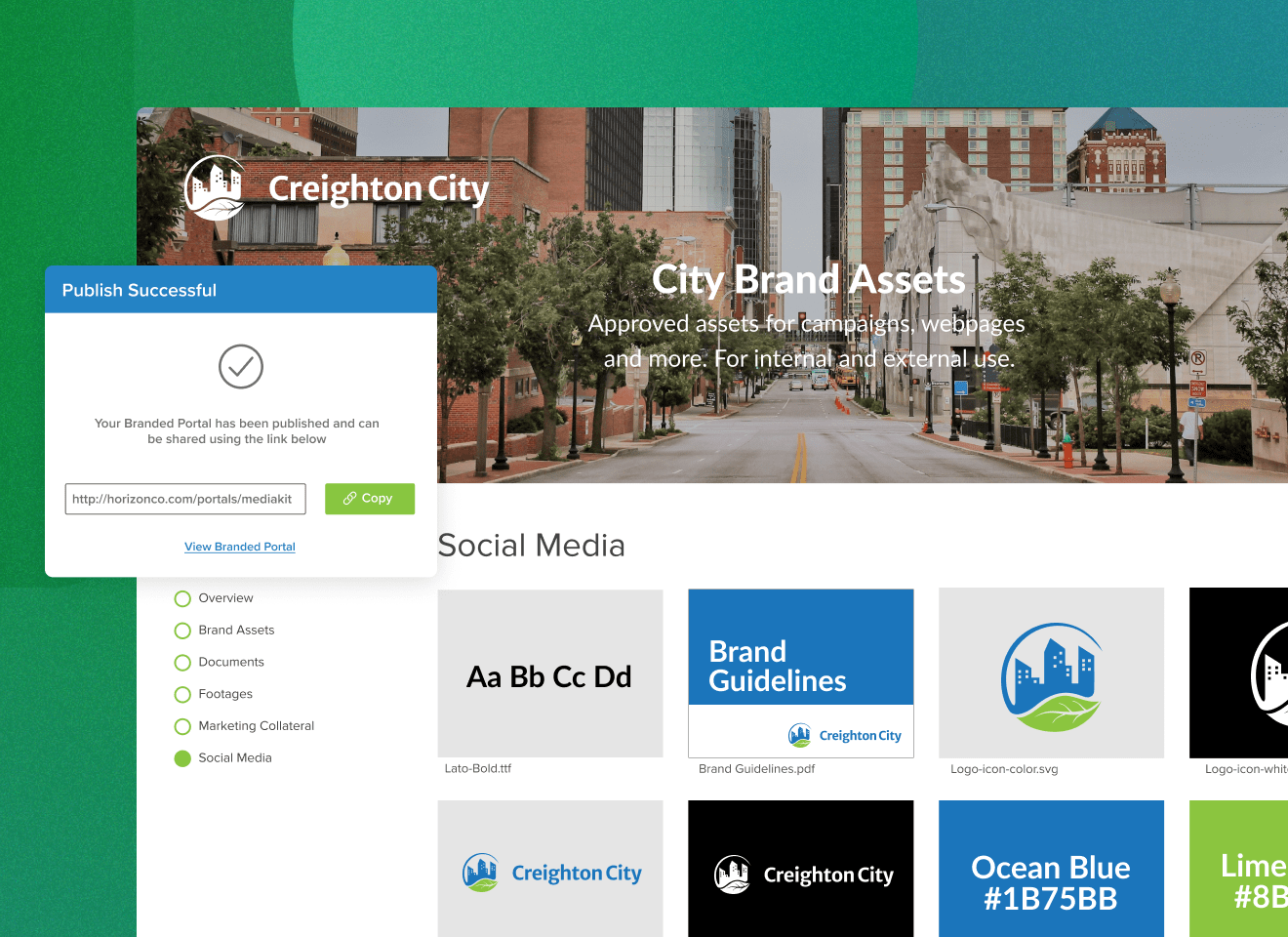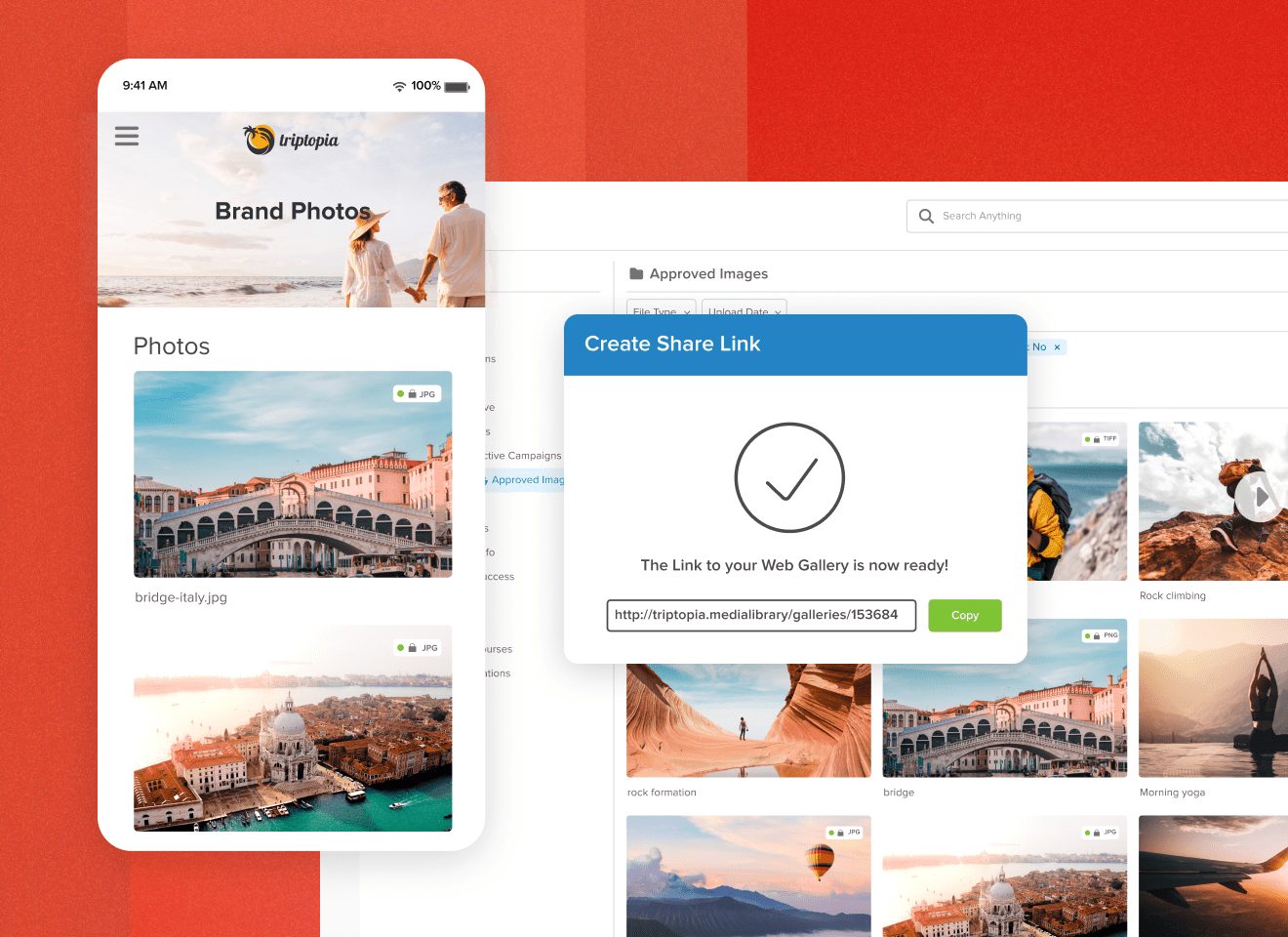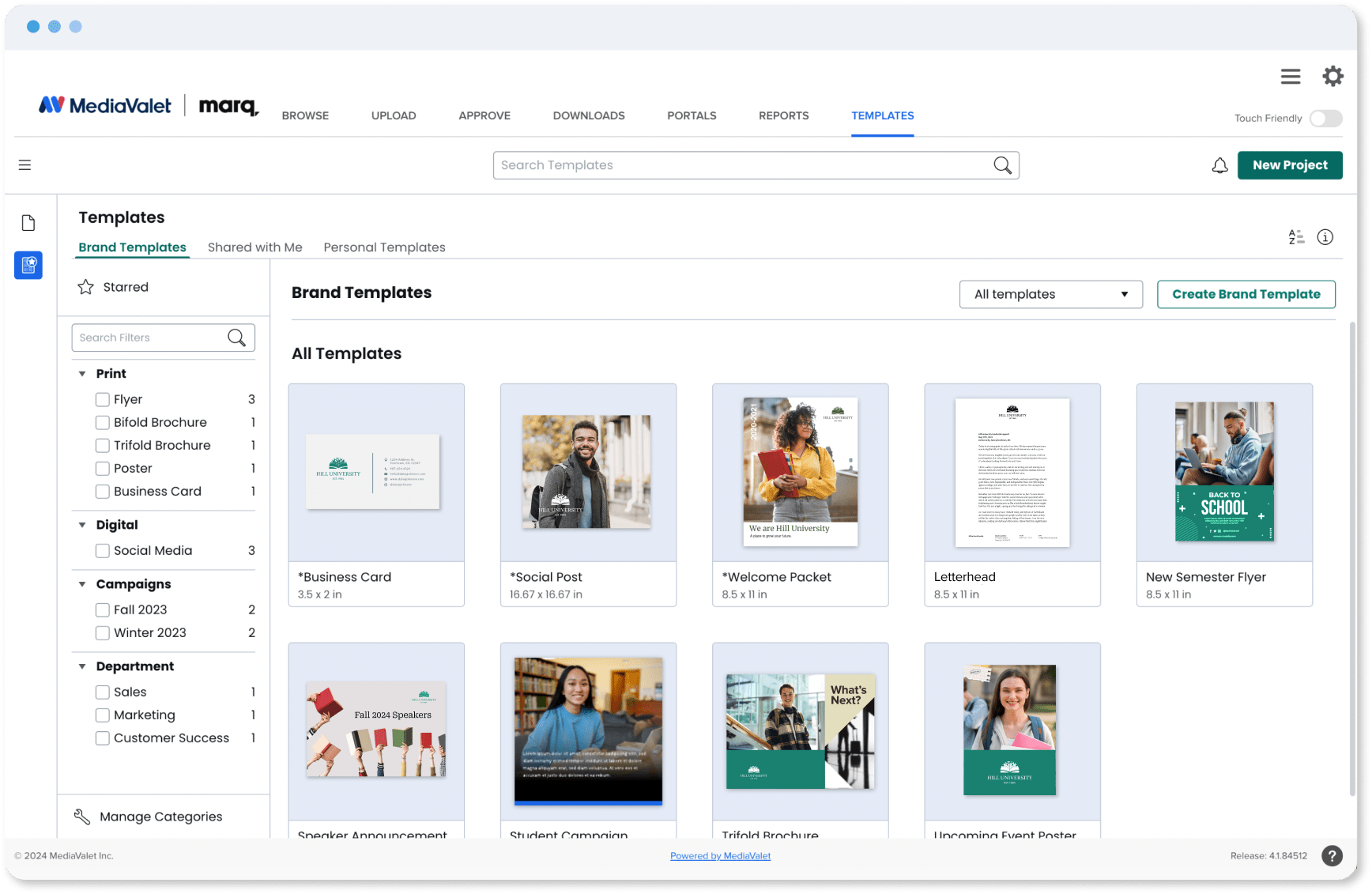Maintaining a consistent and recognizable brand identity becomes increasingly challenging as organizations expand their reach across numerous online channels. These days, every website update, tweet, and ad can impact your brand’s perception, making it more crucial than ever to keep your brand guidelines tight and well-defined.
Effective brand guidelines are the backbone of your brand’s identity, ensuring that every piece of content, from marketing materials to customer interactions, reflects your core values and visual aesthetics. However, as your organization grows and diversifies its online presence, these guidelines must be meticulously managed and amplified to maintain consistency and coherence.
But how do you lasso every employee, and every department to ensure that each instance of your brand is on point and in line? With an easy-to-use, central, and accessible library for all assets.
But we’re getting ahead of ourselves. Let’s first cover some of the more foundational aspects of amplifying brand guidelines.
In this post we’ll cover:
- What are brand guidelines
- Brand guidelines essentials
- How to create & amplify brand guidelines
- Leveraging dam for brand guideline management
- How ACAMS harnesses DAM to amplify global brand guidelines
What are Brand Guidelines?
Brand guidelines are one of the most crucial aspects of any brand. Everybody should apply the rules to maintain consistency and recognition, including those regarding the use and placement of logos, colour palettes, typography, and voice.
In its simplest form, brand guidelines can be a downloadable folder with a curated set of brand assets and rules. However, when taken one step further, they can act as the single source of truth for your entire brand and connect your stakeholders directly with the up-to-date logos, fonts, photos, and more needed to represent your organization successfully.
Brand Guideline Essentials
Effective guidelines ensure a brand is consistently represented across all platforms and communications. These guidelines serve as a comprehensive manual that directs everyone involved in creating, promoting, and maintaining the brand.
When done right, brand guidelines help protect the brand’s integrity, making it instantly recognizable and trustworthy. The following are the key components that make up robust brand guidelines:
There are 3 essential asset types to include in your brand guidelines:
Logos: Your logo is the most critical component of your brand. Using an outdated one adds confusion, reduced trust, and lost sales in the worst circumstances.
It’s essential to ensure your brand guidelines share your various logos and communicate which to use in any given circumstance, as well as proper placement.
For most organizations, it’s common to have dozens of logos with different colour schemes, sizes, and formats, depending on:
- Placement,
- Background colour,
- Channel,
- Medium (printed or online),
- And more.

Colour Palettes: Another necessary asset type to include in your brand is colours – the primary, secondary, and accent colours that represent your organization and spark brand recognition. These are especially helpful to share with those who create public-facing collateral, such as sales presentations, brochures, and advertisements.
When adding colours to your brand guidelines, include the HEX, RGB, and CMYK values for each colour to ensure your stakeholders are on-brand across the website, print, online, and other initiatives. Also, make it clear which colours can be matched together and where they can be used to prevent any off-brand colour placements.
Fonts: The final element that’s critical to your brand is your fonts. While sometimes not instantly identifiable to the naked eye, it can be jarring for customers to see a font that’s “off.”
Like the other two components, in addition to providing each font, it’s important to provide context when using the fonts and, when relevant, what sizes to use. If using an entire font family, separate them (into Light, Regular, Bold, Italics, etc.) to create a clear distinction in their use cases and prevent unnecessary access to off-brand font types.
Practical Steps to Create and Amplify Brand Guidelines
Creating comprehensive and accessible brand guidelines is a collaborative and strategic endeavor that involves multiple stakeholders.
This process requires careful planning, inclusive input from various departments, and a structured approach to ensure the guidelines are practical, widely accepted, and effectively implemented across the organization.
Stakeholder Engagement
Inclusive Input Gathering: Engage representatives from various departments, such as marketing, sales, customer service, and product development. Each department interacts with the brand differently and can provide unique insights into how the brand is perceived and implemented. This ensures that the guidelines are well-rounded and cater to the needs of all parts of the organization.
Workshops and Brainstorming Sessions: Conduct workshops and brainstorming sessions with these stakeholders to gather diverse perspectives and foster a sense of ownership and commitment to the brand guidelines.
Documentation
Comprehensive Brand Elements: Document all branding elements, including logo usage, color palettes, typography, imagery, tone of voice, and messaging. Each element should have specific instructions on proper and improper usage.
User-Friendly Format: Ensure that the guidelines are accessible and easy to understand. Use visuals, examples, and concise explanations to illustrate key points. A well-organized digital document or interactive online portal can make navigation and updates easier.
Consistency in Communication: Include guidelines for maintaining consistency across different communication channels. Specify how the brand is represented in social media posts, advertisements, email campaigns, and customer service interactions.
Training and Onboarding
Comprehensive Training Programs: Develop training programs to educate employees about the brand guidelines. These programs should be tailored to different organizational roles, ensuring everyone understands their responsibilities in maintaining brand consistency.
Accessible Resources: Create a centralized repository where employees can easily access the brand guidelines and related resources, such as templates, logo files, and approved imagery.
Organizations can apply these steps to create and amplify brand guidelines that maintain consistency and adapt to the dynamic nature of a growing digital landscape. The next step is to implement the right technology to amplify brand guidelines.
Leveraging DAM to Amplify Brand Guidelines
Implementing a robust DAM system to store and manage all brand assets. This ensures that everyone has access to the most up-to-date and approved versions of brand elements.
Organizations can utilize DAM features that streamline the enforcement of brand guidelines. These tools can help monitor and manage brand usage across various platforms, reducing the risk of inconsistencies.
Leveraging a DAM system like MediaValet can significantly streamline the creation, management, and distribution of brand guidelines. MediaValet, for example, offers tools that facilitate the organization and sharing of digital assets that adhere to these guidelines, enhancing both accessibility and consistency.
Brand Portals: MediaValet’s Branded Portals enable you to take your brand guidelines to the next level, sharing your brand essentials with stakeholders at scale. With Branded Portals, users can easily preview and download logos, brand colours, approved photos, corporate headshots and more – even fonts can be previewed directly in the portal!
Branded Portals can also be updated on the spot, which means if a new logo needs to be shared or an outdated headshot needs to be removed, your organization can continue to access your brand kit using the same link every time.


CDN Linking, Expiry Dates, and Custom Permissions: These features can help manage how and where content is distributed, ensuring that only current and approved versions are in use.
CDN Links simplify asset sharing, enable quicker load times, and reduce bandwidth costs.
Expiry dates enable administrators of the DAM to apply end dates to asset usage ensuring outdated or unlicensed assets are not used.
Custom permissions allow DAM administrators to curate access allowances across user groups ensuring that only correct brand assets are visible.
DAM Templates: Implementing DAM templates can drastically enhance your team’s efficiency without compromising on brand consistency.
By providing a repository (in the DAM) of customizable, pre-approved, on-brand templates (with the templating solution) your creative teams can produce adaptable, brand consistent materials swiftly, addressing each department’s unique needs.
By integrating a DAM, companies can maintain a strong and consistent brand presence, both internally and in their external communications.

How ACAMS Manages Global Brand Guidelines with MediaValet
ACAMS (Association of Certified Anti-Money Laundering Specialists), turned toMediaValet to overhaul its brand management processes.
Using the DAM to centralize their digital assets ACAMS achieved more consistent brand guidelines and improved their global brand coherence.
Interested in how ACAMS have achieved a cohesive, global brand with their MediaValet DAM? Check out the ACAMS case study here!
The significance of brand guidelines cannot be overstated. They are not just a set of rules but a foundation for building a recognizable and respected brand. As shown through various examples and technological supports, effectively implemented and managed brand guidelines are key to maintaining brand integrity.
If you’re interested in improving your organization’s access to and use of your brand guidelines, reach out to our expert reps at MediaValet and find out how we can enhance your branding efforts.
Related Articles
Ready to see what the DAM hype’s about?
Meet with one of our product experts




